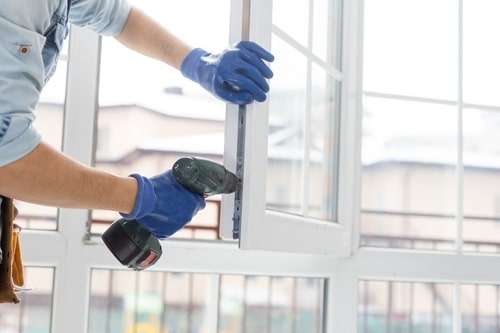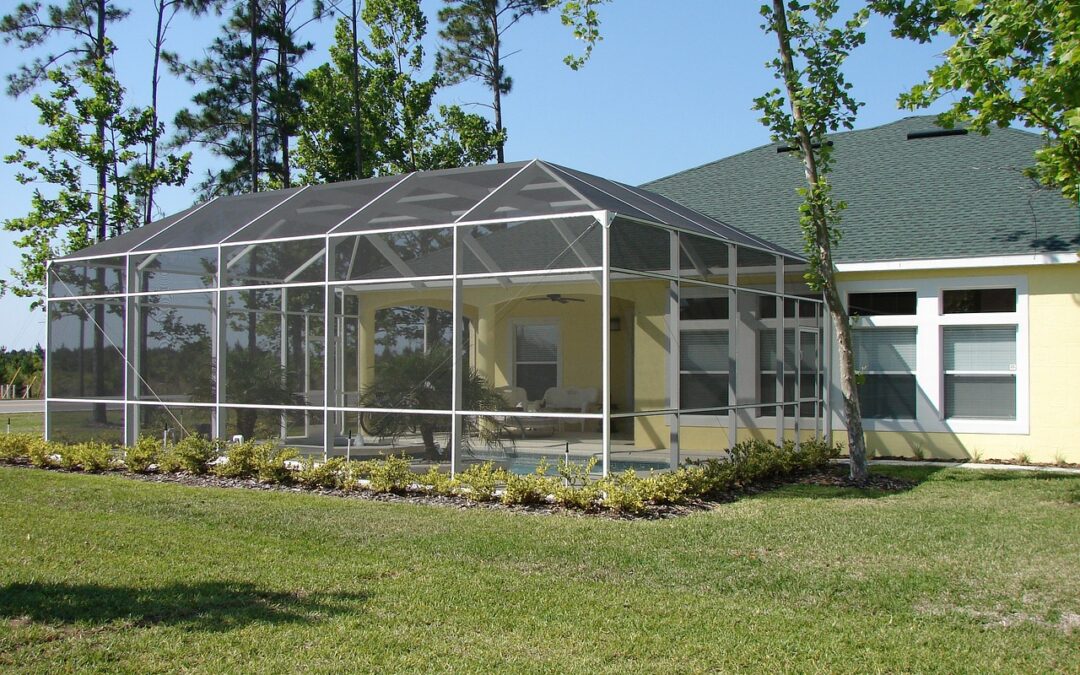How to Maintain Your New Windows and Doors for Longevity

Maintaining your new windows and doors ensures their longevity and optimal performance. Regular maintenance keeps them looking great and prevents costly repairs and replacements. Well-maintained windows and doors contribute to your home’s energy efficiency, security, and aesthetic appeal.
Critical maintenance areas include regular inspections to identify any early signs of damage or wear, thorough cleaning to remove dirt and debris, and proper sealing and caulking to prevent drafts and moisture intrusion. Additionally, lubricating moving parts ensures smooth operation, while timely repairs of minor damages help maintain structural integrity. By establishing a consistent maintenance routine, you can significantly extend the lifespan of your windows and doors, protecting your investment and enhancing your home’s comfort and value.
Regular Inspections of Windows and Doors
Regular inspections are vital for maintaining the longevity and functionality of your new windows and doors. Inspections should be conducted at least twice a year, ideally during the spring and fall. This timing allows you to identify and address any issues that might have arisen due to seasonal weather changes, such as extreme temperatures, humidity, or storms.
During each inspection, check for common issues that can affect the performance and durability of your windows and doors. Look for leaks, which can lead to water damage and mold growth if not addressed promptly. Inspect the frames, sashes, and seals for cracks or gaps, as these can compromise the structural integrity and insulation properties, leading to drafts and increased energy costs.
Moisture buildup is another critical area to monitor. Condensation between glass panes or on the interior surfaces can indicate poor insulation or seal failure, which should be addressed to prevent further damage. The caulking around windows and doors should also be examined to ensure it is intact and provides a proper seal. Any signs of deterioration, such as peeling or cracking, should be repaired immediately.
By conducting regular inspections and addressing any issues promptly, you can prevent minor problems from becoming significant repairs, ensuring your windows and doors remain in excellent condition for years to come.
Cleaning Techniques
Regular cleaning is essential for maintaining the appearance and functionality of your windows and doors. Here are some general cleaning tips for glass, frames, and tracks:
General Cleaning Tips:
- Glass: Use a mixture of water, mild dish soap, or a commercial glass cleaner. Avoid abrasive materials that can scratch the glass. For a streak-free finish, use a squeegee or microfiber cloth.
- Frames: Dust the frames regularly and wipe them down with a damp cloth. For tougher grime, use a mixture of water and mild detergent.
- Tracks: Vacuum the tracks to remove loose dirt and debris. Then, clean with a brush and soapy water to ensure smooth operation of sliding windows and doors.
Specific Cleaning Methods for Different Materials:
- Wood: Clean wooden frames with a soft cloth or sponge and mild soapy water. Avoid excessive moisture to prevent wood damage. Dry the surfaces thoroughly after cleaning. Inspect for signs of wear and refinish as needed.
- Vinyl: Vinyl frames are low-maintenance. Use a mild dish soap and water mixture, rinse thoroughly, and dry with a soft cloth. Avoid abrasive cleaners that can scratch the surface.
- Aluminum: Clean aluminum frames with a mild detergent and water. For tougher stains, use a vinegar solution. Avoid harsh chemicals that can damage the powder coating.
Recommended Cleaning Solutions and Tools:
- Glass cleaner or a mixture of water and dish soap
- Microfiber cloths or squeegees for a streak-free finish
- Soft brushes and vacuum for cleaning tracks
- Mild detergent for cleaning frames
- Vinegar solution for tougher stains on aluminium
Using the right cleaning techniques and tools, you can keep your windows and doors looking pristine and functioning smoothly for years.
Sealing and Caulking
Proper seals around your windows and doors prevent drafts, moisture intrusion, and energy loss. Over time, caulking can deteriorate, leaving gaps that compromise the insulation and doors absolute integrity of your windows and doors.
Importance of Maintaining Seals:
- Energy Efficiency: Well-sealed windows and doors prevent drafts, reducing heating and cooling costs.
- Moisture Prevention: Proper caulking prevents water from seeping in, which can cause mold, rot, and structural damage.
- Enhanced Comfort: Seals keep out drafts and noise, ensuring a comfortable living environment.
How to Check and Apply New Caulking:
- Inspection: Regularly check the caulking around windows and doors for cracks, gaps, or peeling. Pay special attention to the joints and corners where damage is more likely.
- Preparation: Remove old, deteriorated caulk using a putty knife or a caulk remover tool. Clean the area thoroughly to ensure proper adhesion of the new caulk.
- Application: Use a caulking gun to apply a continuous bead of a new caulk. To ensure a tight seal, smooth the bead with a caulk finishing tool or your finger. Allow the caulk to cure as per the manufacturer’s instructions.
Types of Caulk and Sealants:
- Silicone Caulk: Ideal for non-porous surfaces like glass and metal. It offers excellent water resistance and flexibility.
- Acrylic Latex Caulk is suitable for interior applications. It is easy to apply and paintable, making it great for wooden frames.
- Polyurethane Caulk: This caulk is best for exterior use. It adheres well to various materials and provides a durable, weather-resistant seal.
Regularly inspecting and maintaining the seals around your windows and doors can enhance their performance and longevity.
Lubrication of Moving Parts
Proper lubrication of the moving parts in your windows and doors is essential for smooth operation and to prevent wear and tear. Key parts that require regular lubrication include hinges, tracks, and locks.
Identifying Parts That Need Lubrication:
- Hinges: Look for squeaky or stiff hinges on both windows and doors.
- Tracks: Sliding windows and doors often have tracks that collect dirt and debris, leading to difficulty in opening and closing.
- Locks: Any locking mechanism, including deadbolts and window latches, should be kept lubricated to ensure ease of use and to prevent rust.
Recommended Lubricants and Application Methods:
- Silicone Spray: Ideal for use on tracks and hinges. It is anti-sticky, water-resistant, and works well on metal and plastic parts.
- Lithium Grease: Excellent for heavier-duty parts like hinges and locks, providing long-lasting lubrication.
- Graphite Powder is best for locks, as it doesn’t attract dust and dirt, ensuring smooth operation without gumming up the mechanism.
Application Methods:
- Clean the Parts: Remove any dirt, dust, or old lubricant with a clean, dry cloth.
- Apply the Lubricant: For silicone spray, shake the can and spray a light, even coat on the parts. Apply a small amount directly to the hinge or lock mechanism for lithium grease.
- Operate the Parts: Move the window or door back and forth to ensure the lubricant spreads evenly and works into all moving parts.
Frequency of Lubrication:
- Lubricate moving parts at least twice a year, ideally during regular maintenance inspections in spring and fall.
- Apply additional lubrication if you notice any stiffness, squeaking, or difficulty in operation.
By regularly lubricating the moving parts of your windows and doors, you can ensure their smooth operation and extend their lifespan.
Signs Your Windows and Doors Need Replacement
Indicators of Irreparable Damage
Visible Damage: Cracks in the glass, warping, or rot in the frames clearly show significant damage. Cracks can compromise the integrity of the glass, leading to potential safety hazards and loss of insulation. Warped or rotten frames, especially in wooden windows, indicate prolonged exposure to moisture and are often beyond simple repair.
Difficulty in Operation: If your windows and doors are difficult to open or close, it could indicate structural issues such as warping or damage to the hardware. Over time, this can increase wear and tear on the components, making replacement a more viable option than continuous repairs.
Condensation and Moisture Buildup: Persistent condensation between glass panes suggests that the seals are no longer effective. This can lead to moisture buildup, which not only affects visibility but also reduces the window’s insulating properties, causing mold and mildew growth.
Assessing Energy Efficiency Loss
Increased Energy Bills: A sudden increase in your energy bills without any other explanation could be due to your windows and doors losing their insulating properties. Poor seals, gaps, and deteriorating frames allow drafts to enter, making your HVAC system work harder to maintain indoor temperatures.
Drafts and Temperature Fluctuations: Feeling drafts near your windows and doors or noticing significant temperature differences around these areas strongly indicates that they no longer provide adequate insulation. This can lead to uncomfortable living conditions and higher energy consumption.
Noise Reduction: Modern windows and doors are designed to provide sound insulation. If you notice an increase in external noise, it could mean that the insulating properties have degraded over time, indicating a need for replacement.
When to Consult a Professional
Persistent Issues: If you have repeatedly tried to fix issues such as drafts, leaks, or difficulty in operation without success, it is time to consult a professional. They can assess whether repair or replacement is the best option.
Specialized Assessments: Professionals can provide specialized assessments, such as thermal imaging, to detect heat loss or structural evaluations to determine the extent of damage. These assessments can give a clear picture of the condition of your windows and doors and the necessary steps to address any problems.
Replacement Advice: If your windows and doors are nearing the end of their lifespan, a professional can advise on the best replacement options that offer improved energy efficiency, durability, and aesthetics, enhancing your home’s overall value and comfort.
By recognizing these signs and consulting a professional when necessary, you can ensure that your windows and doors continue to perform effectively, maintaining your home’s comfort and efficiency.
Conclusion
Regular maintenance of your windows and doors ensures their longevity, functionality, and efficiency. Establishing and adhering to a consistent maintenance routine can prevent minor issues from becoming major problems, thereby protecting your investment and maintaining a comfortable, energy-efficient home.






